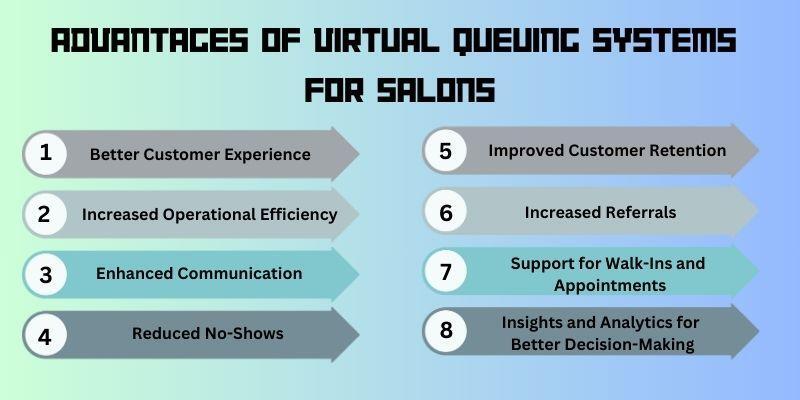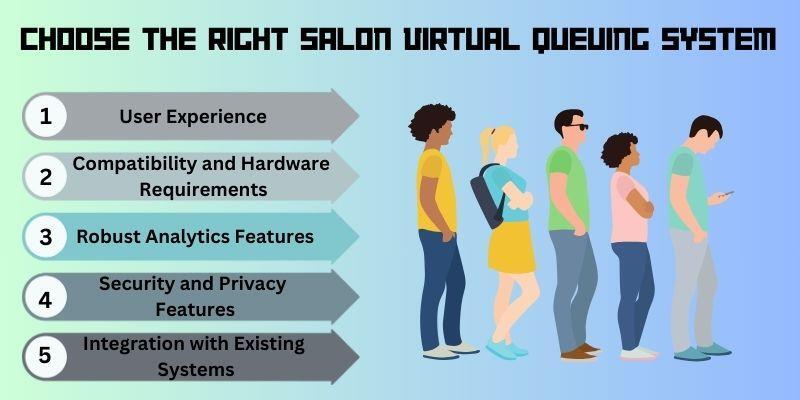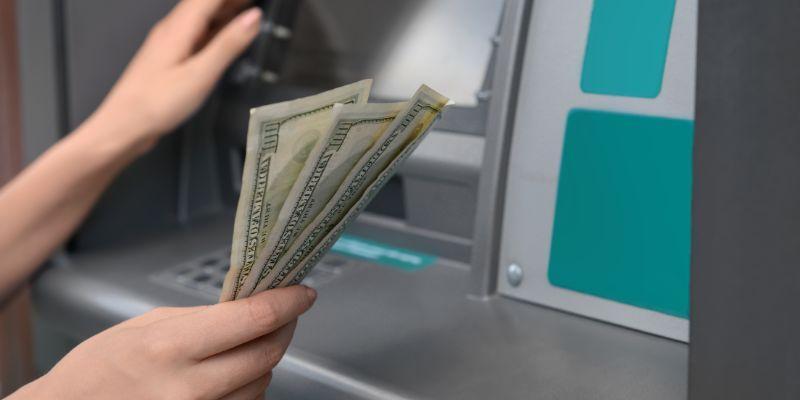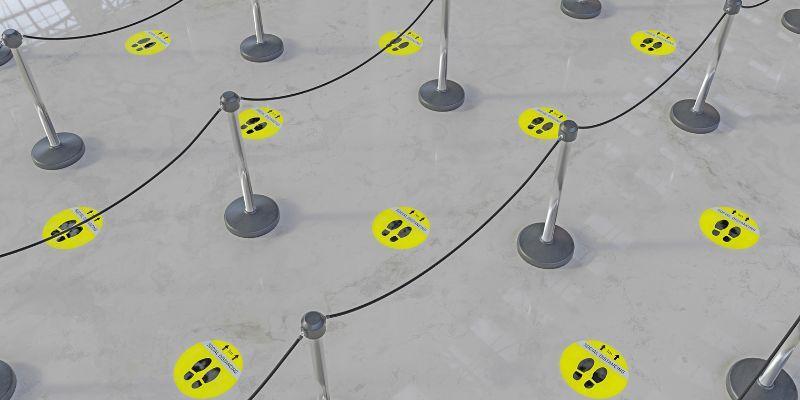In today’s fast-paced world, salons and barbershops must deliver fast, efficient service to meet customers’ high expectations.
Long wait times can lead to dissatisfaction, with clients sometimes deciding to leave rather than sit through extended waits.
This is where virtual queuing systems are making a difference. These systems let customers “wait in line” from anywhere, giving them control over their time while keeping them informed with real-time updates on their place in line via their smartphone.
When allowing clients to check their wait time and get alerts when it’s their turn, virtual queuing creates a smoother, more enjoyable experience.
This article will explore how virtual queuing for salons benefits both customers and businesses. We’ll cover critical advantages such as improved customer satisfaction, increased efficiency, and better communication.
Additionally, we’ll discuss what to look for in a virtual queuing system, ensuring that your salon meets modern expectations and keeps clients coming back.
The Need for Virtual Queuing in Salons and Barbershops
Operating a salon or barbershop involves juggling scheduled appointments and walk-in clients, which can sometimes be challenging.
Balancing these two types of clients without causing long wait times is vital to maintaining a positive customer experience. Traditional waiting methods, where clients sit in a crowded waiting area, can lead to:
- Uncomfortable and impatient customers: Crowded spaces and extended waits can create discomfort and frustration.
- Lost business opportunities: When wait times are too long, customers may leave and seek services elsewhere.
A virtual queue system for salons offers a modern solution to these challenges, allowing for better appointment and walk-in management.
With a virtual queue, customers can “wait” from anywhere, giving them more control over their time and boosting their experience. Here’s how a virtual queuing system makes a difference:
- Flexible Waiting: Customers don’t have to stay in the salon; instead, they can join a virtual line, allowing them to return when it’s nearly their turn. This is especially convenient for customers who want to grab coffee, run errands, or relax elsewhere.
- Real-Time Updates: Salon virtual queuing solutions provide customers with real-time information on their line placement. Clients receive alerts when their turn approaches, reducing the need to wait anxiously and making the experience less stressful.
- Improved Customer Satisfaction: When giving customers freedom and reducing crowded waiting areas, virtual queuing helps improve their overall experience, making them more likely to return.
Benefits of Virtual Queuing Systems for Salons

Using a virtual queuing system can transform how salons and barbershops operate. It offers many benefits, including improving the customer experience, aligning salon operations, and boosting business.
Here’s a closer look at how these systems help salons and barbershops thrive:
1. Better Customer Experience
One of the most significant advantages of virtual queuing is the improved customer experience it offers. Traditionally, clients would have to wait inside the salon, which can sometimes be uncomfortable or time-consuming, especially during peak hours.
With a virtual queuing system, customers don’t need to be physically present to stay in line. They can join a waitlist from anywhere, whether at home, at work, or running errands.
This flexibility makes clients feel more at ease, knowing they can better use their time. Some virtual queuing systems even provide real-time updates on wait times so customers know exactly where they stand.
These updates are accessible on their smartphones or via text, making it easy for them to check their place in line without constantly calling the salon for updates.
Knowing they have control over their wait time improves the customer experience. Customers with a positive experience are likelier to return and recommend the salon to friends and family.
2. Increased Operational Efficiency
A virtual queuing system benefits customers and helps the salon run more efficiently. Managing a crowded waiting area, handling appointments, and coordinating walk-ins can be challenging, especially for busy salons with limited space.
When using a virtual queue, salons can avoid having a packed waiting area and instead let customers wait from a distance until it’s their turn. This allows salon staff to focus on clients without the pressure of monitoring a waiting area.
For instance, a front desk worker who usually manages walk-ins, answers phones, and keeps track of appointments can now concentrate on greeting clients, assisting stylists, and ensuring that everything runs smoothly.
The virtual queue system handles tasks like scheduling and sending notifications to clients when it’s their turn, freeing up time for salon staff to focus on their main responsibilities. This streamlined approach leads to a more organized, efficient salon that benefits employees and clients.
3. Enhanced Communication
Communication is a crucial aspect of good customer service, and virtual queuing makes staying in touch with clients easier. With virtual queuing, clients receive automatic updates about their wait time and appointment status via text messages or app notifications.
This consistent communication reassures clients that they’re remembered and keeps them informed without needing to call or ask for updates.
For example, if there’s an unexpected delay, the system can automatically send a message to clients to let them know, giving them a heads-up and helping them manage their expectations. Some systems also allow clients to respond or ask questions, adding a layer of interactivity.
These real-time updates advance better communication, making clients feel respected and valued. The ability to easily communicate wait times, delays, or other changes builds trust and encourages clients to be more patient during busy times.
4. Reduced No-Shows
No-shows can be a major issue for salons, leading to gaps in the schedule and lost revenue. With virtual queuing systems, salons can significantly reduce no-show rates by sending clients automatic reminders about their upcoming appointments via email or text.
Often, clients need to remember their booking, and a quick reminder helps ensure they remember and show up.
Additionally, these reminders can include options for clients to cancel or reschedule if they can’t make it. This way, if a client decides they’re unable to attend, they can easily adjust their appointment, freeing up the slot for another customer.
This flexibility ensures that salons maintain a full schedule and don’t lose income due to missed appointments. A reduced no-show rate means more efficient time management and consistent income for the business.
5. Improved Customer Retention
Customer retention is critical for salons and barbershops. Regular clients provide stability and help build a solid reputation for the business. Salon virtual queuing solutions help retain customers by enabling salons to keep in touch with them between visits.
Many queuing systems can send reminders when it’s time for the client’s next appointment, encouraging them to book again. This is particularly useful for services that require regular visits, like haircuts or nail treatments.
For instance, a barbershop could message clients a few weeks after their last haircut, reminding them to book their next one. These reminders help keep the salon top-of-mind for clients and encourage repeat business.
When staying connected with clients, salons build long-term relationships, making customers more likely to return and trust the salon for their beauty needs.
6. Increased Referrals
Satisfied customers are likelier to recommend a salon to friends, family, or colleagues. Using a digital waitlist and appointment booking system improves the overall customer experience by making the visit more accessible and convenient.
Customers who have a smooth, enjoyable experience are likelier to leave positive reviews online and recommend the salon to others.
In addition to word-of-mouth referrals, some virtual queuing systems even allow salons to implement referral programs, where clients can invite friends in exchange for discounts or special offers.
A great experience combined with an easy-to-use referral system can quickly expand a salon’s client base, helping it grow through loyal customers who bring in new clients.
7. Support for Walk-Ins and Appointments
Virtual queuing systems can help salons manage scheduled appointments and walk-ins without chaos. While appointments bring predictability, walk-ins often contribute to added stress and disorganization.
With a virtual queue, walk-ins can be easily added to the system, and clients are informed about their wait time, just like those with appointments. This feature simplifies salons’ handling of unexpected visitors and prevents walk-ins from interrupting the flow of scheduled appointments.
Salons can better balance their client load and minimize disruptions by managing walk-ins and appointments within one system.
This results in a more harmonious and predictable work environment for staff, while clients appreciate knowing when they’ll be served, even if they didn’t make an appointment in advance.
8. Insights and Analytics for Better Decision-Making
Some virtual queuing systems have analytics features that allow salons to track key metrics, such as peak times, average wait times, and no-show rates.
Understanding these patterns allows salon managers to make data-driven decisions that improve service and boost customer satisfaction. For example, they might adjust staffing levels during peak hours or offer promotions during slower times.
These insights are invaluable for planning and optimizing the salon’s operations. Analytics also help salon owners identify areas for improvement and evaluate how the virtual queuing system impacts client flow and satisfaction.
This data allows salons to continually refine their processes and provide a top-notch experience for every client.
How Virtual Queuing Enhances Customer Engagement in Hair Salons
Engaging with customers is key in the salon industry. Virtual queuing systems for salons offer tools that enable better interaction between staff and clients. Many systems allow two-way communication, so clients can ask questions, give feedback, or change appointments.
Personalized messages also make clients feel valued. For example, after a customer’s first visit, a salon might send a thank-you message or a follow-up to check their satisfaction.
This kind of engagement helps salons build stronger relationships with their clients, making them more likely to return.
Choosing the Right Virtual Queuing System for Salons

Selecting the best virtual queuing system for salons is a crucial choice that impacts day-to-day operations and customer satisfaction.
With many options available, it’s important to consider key factors that ensure the system fits effortlessly into your salon’s workflow and heightens the customer experience. Here are some essential things to keep in mind:
1. User Experience
The user experience of a virtual queue system is vital. For the system to be effective, clients and salon staff must find it easy to use. A user-friendly design allows clients to join the queue, check their wait time, and get hassle-free real-time updates.
If the system is simple and easy to navigate, clients might get frustrated, which defeats the purpose of improving their experience.
An intuitive interface means salon staff can quickly learn to use the system without extensive training. When the system is straightforward, staff spend less time on logistics and more time attending to clients.
A good virtual queuing system should offer a clean and simple design that enhances rather than complicates the client experience.
2. Compatibility and Hardware Requirements
The virtual queuing system should work smoothly across various devices, such as smartphones, tablets, and desktop computers, without requiring additional hardware investments.
Many online queue systems for salons are cloud-based, meaning they can be accessed from multiple devices without central installation.
Cloud-based systems are particularly convenient for salons. They allow managers and staff to check the queue, track appointments, and communicate with clients from almost any internet-enabled device.
This flexibility ensures that the system integrates easily into the salon’s current setup and does not require costly upgrades. Choosing a system that works across different platforms keeps operations simple and ensures the system is accessible to everyone involved.
3. Robust Analytics Features
Analytics is a valuable feature in a virtual queuing system. A system with robust analytics helps salons gather insights into customer patterns, peak times, wait times, and no-show rates.
Having access to this data allows salon owners to make better decisions, such as adjusting staffing levels during peak hours or identifying times when additional promotions may be helpful to attract clients.
For instance, if analytics show that certain days or hours are busier, salons can plan accordingly to ensure they have enough staff.
Additionally, tracking no-show rates helps salons understand how reminders and notifications impact customer behavior, allowing them to fine-tune their approach.
In the long run, these insights can help improve operational efficiency and boost customer satisfaction by providing a data-driven approach to service.
4. Security and Privacy Features
Since virtual queuing systems handle sensitive client information, data security is necessary. Customers want to know that their details, such as contact information and appointment history, are safe.
To keep customer data safe, an excellent virtual queuing system will have robust data protection features, including encryption and secure access controls.
It’s also essential that the system complies with relevant privacy regulations, such as the General Data Protection Regulation (GDPR) in Europe.
Compliance reassures customers that the salon takes their privacy seriously and adheres to high standards in data management. When choosing a system with robust security features, salons can build client trust and demonstrate a commitment to responsible data handling.
5. Integration with Existing Systems
For a virtual queuing system to work smoothly, it should integrate well with other systems already used in the salon, such as appointment scheduling, payment processing, and customer relationship management (CRM) software.
An integrated system means that all essential functions can be managed in one place, simplifying processes for staff and reducing the risk of errors.
For example, a system that integrates with a POS system can automatically record transactions, while one that syncs with a CRM can store customer preferences and history, making it easier for staff to personalize service.
Integration with existing tools not only saves time but also increases the salon’s overall efficiency, providing a modern experience for both clients and staff.
FAQs
How can online booking reduce no-shows in salons?
Online booking sends reminders so customers remember their appointments. This keeps the schedule full.
What are the common concerns salons have about online booking?
Salons may need help with data privacy, ease of use, and whether the system will fit into their current setup.
How does online booking impact the workload of front desk staff?
It reduces their workload by automating scheduling and reminders so they can focus on customer service.
Conclusion
Using a virtual queuing system for salons benefits both clients and staff. It helps reduce wait times, keeps clients informed, and improves the salon experience.
These systems allow clients to wait from anywhere, helping reduce in-salon congestion and minimizing frustration, making visits more enjoyable and encouraging repeat business.
Real-time updates and appointment reminders improve communication, reducing no-shows and promoting a sense of trust and reliability.
For salon staff, virtual queuing aligns daily operations, freeing them from the demands of managing crowded waiting areas so they can focus on delivering exceptional service.
The added analytics help owners make data-driven decisions, optimizing staffing and improving service during peak hours.
Overall, a virtual queuing system modernizes the salon experience and supports business growth by attracting new clients and building more robust, long-term relationships with loyal customers. It’s a step toward greater customer satisfaction and sustainable success.
BOOK A FREE DEMO






